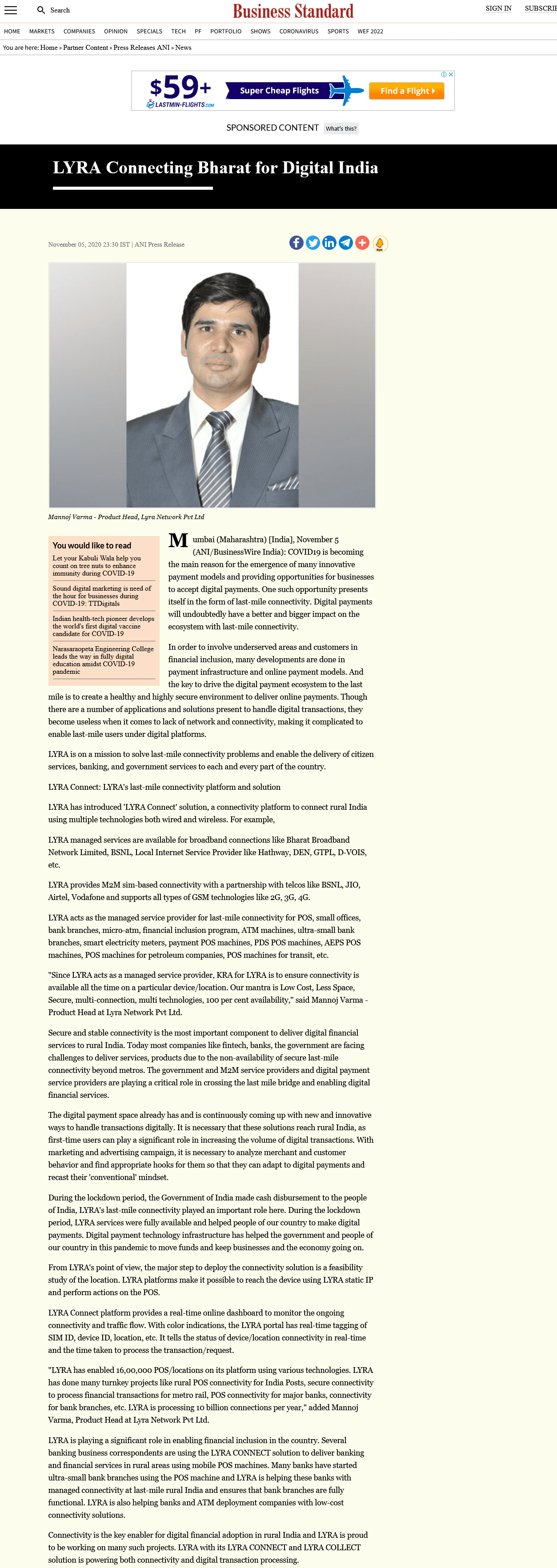Why Last-Mile Connectivity is Crucial to Realize the Digital Dream?
The pandemic has seen a rise and fall in cashless payment systems. On one hand, the temporary or permanent closing of many sectors that used to carry cashless payments majorly became the reason the digital payments took a fall and on the other hand, new businesses like online storefronts, utility bills, etc. gave a helping hand to bring the digital payments back on track.
All in all, it is safe to say that though hit hard by the pandemic, India’s journey towards a cashless economy is slowly but surely getting back on track.
For tier 1 or metro cities and tier 2 cities using digital payments is becoming normal.
Due to the government’s initiative and forcing to use contactless methods due to the social distancing norm, digital payments are becoming quite popular and consumers are getting comfortable with them.
The increasing need for customers to shop and pay from anywhere at any time and businesses making revenue by showcasing, marketing, and selling on digital platforms is giving an essential boost to digital payments.
But, amidst all this, India can not become a cashless economy unless and until rural India is onboard with digital payments.
A large population of India resides in rural areas.
According to a survey, only 20.26% of the rural Indian population has direct access to the internet.
And among that population, not all of them are using digital payments due to various difficulties.
So, why is it difficult to enable last-mile users under digital platforms?
The answer comprises many reasons.
The most obvious reasons stated can be connectivity issues, Network issues, lack of mobile penetration in rural India, etc.
But when considered deeply, the major issues start to pop up.
The two-fold barrier is in the form of the point of view of customers and merchants.
crossing this bridge – helping hands – what are the options? What digital payment service providers should do?
Last-mile digital payment is like an untapped source for service providers, as first-time users can play a significant role in increasing the volume of digital transactions.
With the help of advertising and marketing campaigns, it is necessary to recast the mindset of rural customers and merchants.
It is also necessary to analyze merchant and customer behavior. And find appropriate hooks for them so that they can adapt to digital payments.
Last-Mile Connectivity project

Lyra NAC with an Aadhar-based host system is helping in performing successful online transactions in rural India.
Lyra’s last-mile solution and the micro ATMs, a handheld device with most of the capabilities of regular ATMs, provide real-time connection and eliminates network issues in remote parts of India.
“Several business correspondents are using Lyra’s unique solutions to provide banking services using mobile devices in rural sectors pan India.
In the areas with bad network coverage due to lack of infrastructure,
Lyra’s last-mile solutions are helping in successful online payment transactions by enabling a real-time connection.
In the goal of making rural India Digital, wherever the network is feasible, Lyra is trying to provide secure and extensive digital payment services.”, said Manoj Verma, Product head, Lyra Network.
Currently, with more than 14,00,000 POS devices, over 6,000,000 payment terminals, and over 15 million transactions per day.
Lyra is processing 16 million connections per day.


